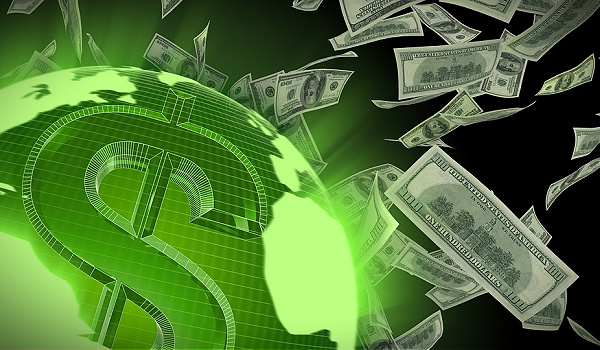Inflation is in it for the long haul. After nearly a year of insisting price increases were “transient,” federal policymakers have resigned themselves to accepting that inflation is going to be with savers and investors for a long time to come.
To Michael Ashton, managing principal at Enduring Investments, inflation has always been a problem, even during the long period of benign inflation that preceded the Covid-19 epidemic.

“Inflation is not a problem for our time, it is a problem for all time,” said Ashton on a recent episode of The Weighing Machine, a podcast hosted by Rusty Vanneman, chief investment strategist for Orion Portfolio Solutions. “Money has gone in one direction: to buy less and less over time, and you’re born with it. The risk is not something you take on like equity risk or credit risk, it’s something you are born with from the first-time grandma gives you a regular savings bond. The value of that savings bond keeps going down and down, and the money in your piggy bank, its value goes down and down all the time.”
So what is an investor to do?
Ashton, who is sometimes dubbed “The Inflation Guy” due to his focus on the topic across a 32-year finance and investment career, had a few suggestions.
One was to reduce exposure to normal equities and bonds in a portfolio, or do away with the traditional balanced portfolio (or 60/40 portfolio) entirely, focusing more on inflation-linked investments like commodities, real property and inflation-linked bonds.
Ashton was also an advocate of I-Bonds, which offer inflation-beating interest rates, but cannot be bought in very high dollar amounts. I-Bonds carry a $10,000 limit for ordinary investment, with additional amounts available for people to purchase using their federal income tax refunds.
“I-series savings bonds are the best deal that the government makes available to us in pretty much everything, especially when real interest rates are negative,” he said. “For small investors, the first investment you should be making is to take everything you can and put it into I-series savings bonds. There is no inflation risk, they pay you inflation plus a spread.”
Cryptocurrencies with built-in scarcity may one day serve as a hedge to inflation, but they aren’t today.
Why Is Inflation Such a Problem?
As many suspect, inflation has surged due to the response, particularly at home in the U.S., to the Covid-19 pandemic—but it wasn’t directly due to fiscal stimulus in the form of checks to American families.
“Everybody thinks the government spent too much and that caused inflation—and that’s part of it, but if the government had sent everybody dollars but then borrowed that money, you don’t have an inflation problem,” said Ashton. “What caused inflation was the monetary element, where we decided we were going to spend extra trillions but then we were going to just print those trillions. The dollars didn’t come out of anybody’s pocket, they just literally showed up on a check. If you spend like a drunken sailor and have someone else paying your bar tab, you’re going to have bad outcomes.”
The real cause of inflation is that the Federal Reserve added 40% to the money supply over a two-year period, said Ashton, which should lead to 25% to 30% price increases across the board.
How Persistent Is Inflation
Central banks can’t simply un-ring the monetary policy bell without making some extraordinary monetary policy moves, said Ashton.
“What we’ve done is break from the old equilibrium of 1.5% to 2% inflation that we’ve enjoyed for decades and set a new equilibrium that is probably 4% to 5$,” he said. “It will be hard to get back to what we had unless the Fed does aggressive things which I don’t think they will.”
Barring a dramatic raise in benchmark interest rates, like the kind championed by former Fed chair Paul Volcker in the early 1980s, economic forces will pull inflation back to the new 4% to 5% equilibrium, said Ashton.
The downstream effects in the economy will be persistent as well. In 1% to 2% inflation, many producers would absorb short-term increases in the prices of raw materials to smooth out their customers’ experiences.
In a higher inflationary environment, manufacturers are more likely to pass through price increases to consumers, said Ashton and once they start doing that “it’s hard to go back.”
Other Downstream Effects
Persistently higher inflation will impact how Americans may best spend and allocate their money, said Ashton. For example, while prices are moving higher, it’s still potentially a good time to consider building, purchasing or renovating a home, because the interest rates on long-term loans like mortgages and home-equity lines of credit remain well below inflation.
Over the long holding period of most homeowners, the prices of homes should still appreciate with inflation over time, said Ashton. “Prices don’t need to do much at all for you to still make money as an investor in that world.”
Investors may want to wait for a bit before buying a used car, however.
“It’s a much more liquid market than housing, and you’re much less levered when buying a car, and you quickly become unlevered because of shorter-term loans,” Ashton said. “Prices can fall in the used car market and they sometimes do. I would expect right now, with prices now rising at 35% year-over-year, that the price increases are not sustainable. We actually got to one point where used car prices in some cases were higher than new car prices for equivalent cars.”
There are two ways the spread between new and used cars could reestablish themselves. One is for used car prices to fall. The other, more likely scenario, is that new prices rise and stay persistently higher.
Food and energy prices, shocked higher by the ongoing conflict between Russia and Ukraine, are also likely to inflate at a persistently higher rate.
“Before Covid, before the inflationary spiral, we weren’t exactly in this nice, amicable political environment where everybody mostly got along, we were already a little bit fractious,” said Ashton. “There was some social unrest in big cities before the inflation spike. It’s something already that, if authorities are not worried about it, they aren’t paying attention. This country hasn’t seen a food riot for a long, long time.”








